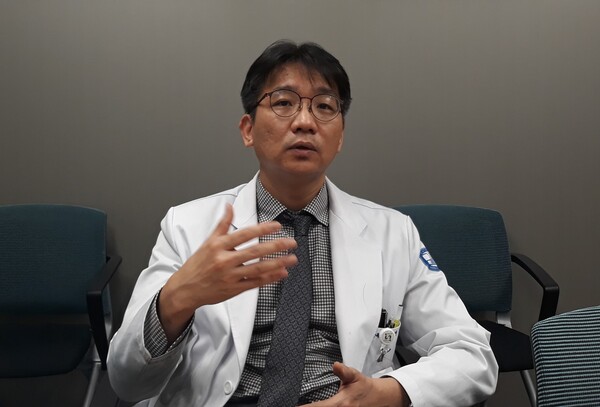Some blood cancers are difficult to distinguish from atopic dermatitis and this can lead to missed treatment.
Mycosis fungoides is a form of cutaneous lymphoma, and while it's a rare cancer with only around 250 known cases in Korea, approximately 15 new cases are diagnosed each year in the country.
Mycosis fungoides is a type of blood cancer that arises from peripheral T lymphocytes, which constitute the majority (80-90%) of lymphocytes in the bloodstream. Initially, the disease presents as skin lesions and gradually spreads to the lymph nodes, blood, and internal organs as malignant cells proliferate. The disease was initially named mycosis fungoides due to its resemblance to a fungal infection that gradually erodes the skin. Today, it is also known as Sézary syndrome.

According to Jeon Young-woo, who is a professor of hematology at Yeouido St. Mary's Hospital, mycosis fungoides can be challenging to differentiate from skin conditions like atopic dermatitis even for dermatologists using only their naked eye.
"For this reason, mycosis fungoides is a representative lymphoma that most patients receive dermatological treatment and miss the time of treatment."
When the cancer cells are localized to the skin, mycosis fungoides can be highly treatable. However, once the cancer spreads beyond the skin and affects the body, treatment becomes more challenging, making early diagnosis critical.
Jeon explained that in cases where mycosis fungoides is limited to the skin, phototherapy can be an effective treatment.
However, when the disease has progressed to an advanced stage, treatment options become limited. For these patients, allogeneic hematopoietic stem cell transplantation is often the only option, but unfortunately, the success rate of this treatment is only around 30 percent.
Most patients with mycosis fungoides are treated in a dermatology clinic, where their atopy turns into eczema and worsens, and when multiple treatments don't work, they suspect something else and are referred to a hematology department at a university hospital, where a CT scan reveals enlarged lymph nodes all over the body, too late.
"Most of the time, patients come to the clinic with lymphoma swelling inside the body," said Jeon. "Dermatologists should not assume that it is atopic dermatitis, but if it is too unresponsive to treatment, a biopsy should be performed to differentiate it from mycosis fungoides."
However, if you find out when your atopic dermatitis is untreated, it may be too late to treat it. This is because cancer cells may have already infiltrated the body.
"Cancer cells may initially only appear on the skin, but at some point, if they are triggered, they can burrow inward and invade organs, and it's impossible to predict what that point will be," explained Jeon.
So how can we detect this cutaneous lymphoma at the earliest possible stage, so that it can be cured with simple treatments?
It is to conduct a biopsy at the first sign of atopic dermatitis, Jeon said.
"It's not expensive, and it's not painful. It takes less than five minutes to remove a small piece of skin from the lesion. It's simple, low-cost, and there's no reason not to do it.”
Jeon reiterated the importance of biopsy for skin diseases, saying, "In the era of evidence-based treatment, it is necessary to know the exact nature of the lesion before treating it."

